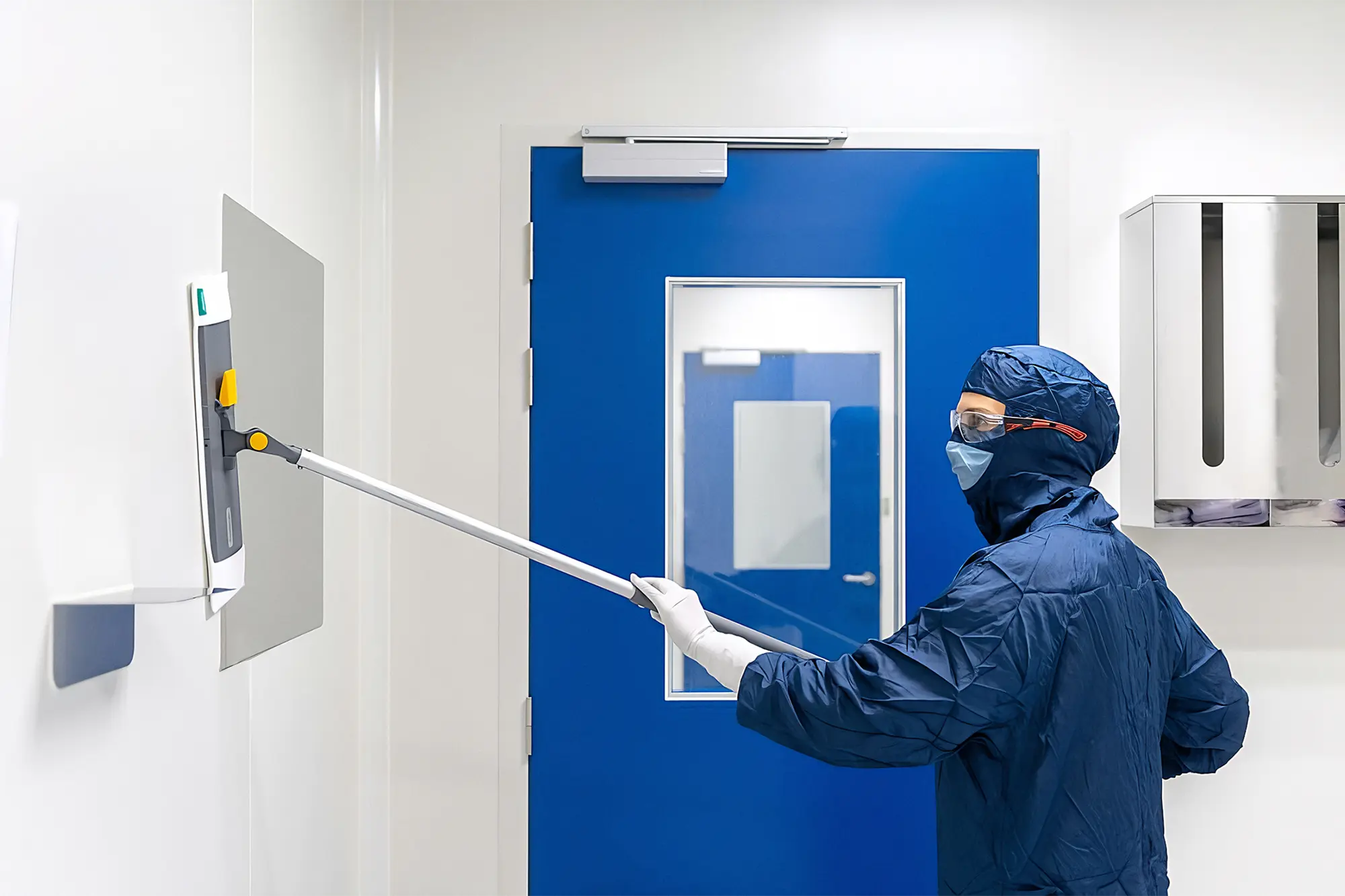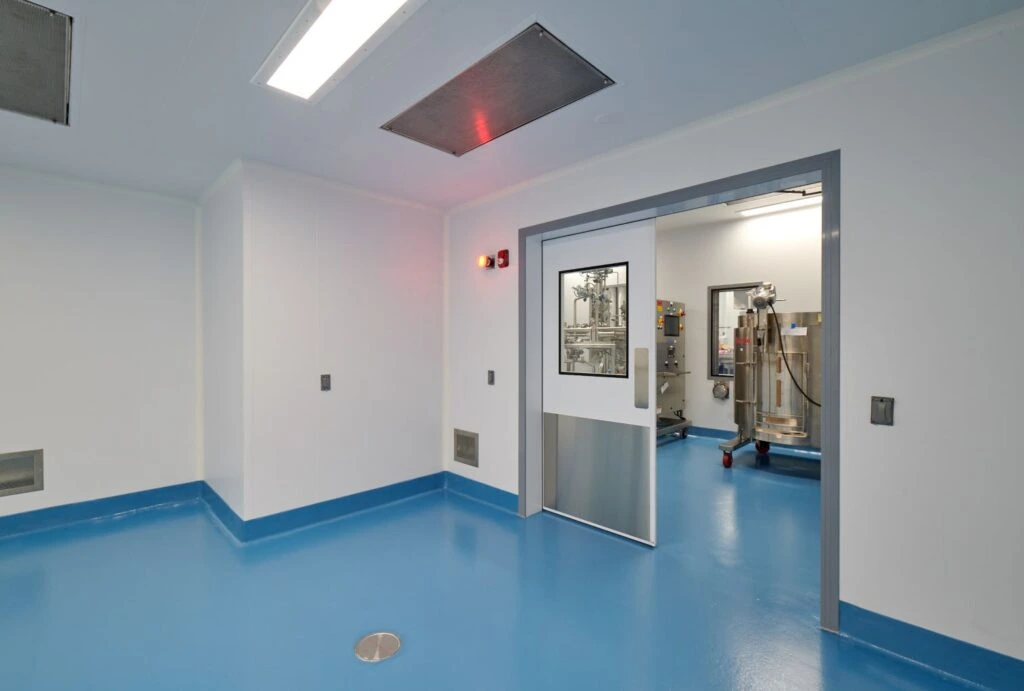What is a BSL Cleanroom?
Explore Biological Safety Levels (BSLs), key updates, containment measures, and modular cleanroom suitability for BSL-1 to BSL-4 environments.

The Biological Safety Level (BSL) serves as a system of biocontainment designation, essential for safeguarding personnel against potential pathogenic exposure in research and manufacturing environments. This system outlines specific requirements for protecting those working in these settings. It’s crucial to note the revision of the Biological Safety Level (BSL) standards in the Biosafety in Microbiological and Biomedical Laboratories (BMBL) in 2020. This update brought about the 6th edition of these standards and included several key updates.
The revisions to the Biological Safety Level (BSL) standards were structured to align with the guidance and regulations of various organizations and federal agencies, enhancing clarity in both language and purpose. This edition was particularly notable for adding new appendices covering critical areas such as inactivation and verification, laboratory sustainability, large-scale biosafety, and clinical laboratory safety. These updates aimed to meet the evolving needs of the biomedical and clinical laboratory community more effectively.
Here’s an updated breakdown of the updated BSL designations:
BSL-1:
- Required for: agents that pose minimal threat to lab personnel and the community. Examples include non-pathogenic bacteria like Bacillus subtilis.
- Containment measures: Work can be done on an open bench; minimal PPE (lab coat, gloves) is required.
- Facility features: The BSL-1 lab should be separated from the rest of the building by a self-closing door.
BSL-2:
- Required for: This level is for moderate-risk agents, such as Staphylococcus aureus or influenza A virus.
- Containment measures: Personnel must wear lab coats, gloves, and eye protection. Work on infectious materials should be done in a biosafety cabinet (BSC). The lab should be under negative air pressure, and exhaust air must be HEPA-filtered.
- Facility features: The BSL-2 lab should have self-closing doors and a handwashing sink.
BSL-3:
- Required for: This level is for high-risk agents that can cause severe or fatal infections, such as SARS-CoV-2 (the virus that causes COVID-19) or MERS-CoV.
- Containment measures: Personnel must wear lab coats, gloves, eye protection, and respirators. All work with infectious materials must be done in a Class II BSC. The lab should be under negative air pressure, and exhaust air must be HEPA-filtered and may require additional treatment depending on the agent.
- Facility features: The BSL-3 lab should have a double-door entry, a handwashing sink, and a shower.
BSL-4:
- Required for: This level is for agents with the highest risk of causing severe or fatal infections and can be easily transmitted by aerosols, such as the Ebola virus.
- Containment measures: Personnel must wear a full-body, positive-pressure suit with an independent air supply. All work with infectious materials must be done in a Class III BSC. The lab should be under negative air pressure, and exhaust air must be HEPA-filtered and treated with a high-efficiency incinerator or other decontamination method.
- Facility features: The BSL-4 lab is usually located in a separate building with restricted access. It should have a decontamination shower room and a waste disposal system.
Some Important Notes about BSL Facilities
Personnel must adhere to standard microbial practices in all Biological Safety Level (BSL) facilities. These practices include rigorous handwashing and the comprehensive decontamination of work surfaces, fundamental procedures crucial for maintaining a sterile and safe laboratory environment.
The specific requirements for each BSL vary based on the biological agent being handled and the laboratory’s risk assessment. This risk assessment is integral in determining the necessary level of containment and safety measures to ensure a secure and controlled environment.
Given the complexity of these requirements, consulting with a qualified biosafety professional is crucial. They possess the necessary expertise to accurately determine the appropriate BSL for your work, ensuring compliance with safety standards and the overall integrity and safety of the laboratory operations.
Biological Safety Levels (BSLs) are monitored through internal audits and external inspections. Institutions that operate laboratories are generally responsible for ensuring adherence to BSL requirements through internal compliance protocols. Keeping facilities compliant includes regular training, risk assessments, and safety audits. Additionally, regulatory bodies such as the Centers for Disease Control and Prevention (CDC) and the Occupational Safety and Health Administration (OSHA) in the United States conduct inspections to ensure compliance with national safety standards. These inspections are critical for maintaining high safety standards in laboratories handling biohazardous materials.
Modular Cleanrooms and BSLs
The most common BSL level for modular cleanrooms depends heavily on the specific applications and materials handled within the cleanroom. While modularity offers flexibility, it inherently has limitations compared to fixed facilities regarding higher biocontainment measures. Here’s a breakdown:
BSL 1
- BSL-1: This is the most common level for modular cleanrooms used in non-hazardous applications like pharmaceutical manufacturing, electronics assembly, and some research settings dealing with non-pathogenic organisms. Modular cleanrooms achieve the controlled environment and particle filtration required by BSL-1.
BSL 2 & BSL 2+ for Cell & Gene Therapy or Multimodal Multi-product Facilities
The design of a CGT facility depends on the types of treatments it will produce, called “modalities.” Each modality might have different biosafety level (BSL) requirements. To ensure the facility can handle different therapies, it needs to meet the strictest BSL level needed for any of them.
- BSL-2 is the most common level for processing blood products, modified cell lines, and materials that contain viruses.
Some companies use a “BSL-2+” approach. This means they take a risk-based approach and implement some additional safety measures from BSL-3 on top of the standard BSL-2 requirements.
- BSL-2: Some modular cleanrooms can be adapted to meet BSL-2 requirements for work with moderate-risk agents. Adjustments generally involve additional features like negative air pressure, HEPA filtration for exhaust air, and biosafety cabinets. However, the inherent limitations of modularity in terms of airlocks, double-door entry, and dedicated waste disposal might make fixed facilities a better choice for specific BSL-2 applications.
- CGT processing goes beyond just handling patient samples. It also involves using vectors to deliver genes into cells. These vectors come in two main forms: viral and nonviral.
- Viral vectors: These use modified viruses to carry genes into cells. Common types include adenoassociated virus (AAV), lentivirus (LV), and adenovirus (AdV). Their production often relies on transient transfection, where plasmid DNA (pDNA) made from E. coli bacteria is used.
- Nonviral vectors: These don’t use viruses. Instead, they use materials like exosomes or lipid nanoparticles (LNPs) to deliver genes.
- The manufacturing process for each vector type differs. For example, AAVs can be made using either animal or insect cells.
- For therapies using a patient’s own cells (autologous) like CAR-T cell therapy, the process is different. Here, lentiviral vectors (LVs) are typically used to introduce the desired genes into the T cells.
Several factors influence this decision, such as:
- Production goals: How quickly and how much product needs to be made?
- Cost: How much can the company afford to invest in building the facility?
- Scale of production: How much product will be made at a time?
- Company type: Is the facility owned by the manufacturer or a contract development and manufacturing organization (CDMO)?
- Facility layout: Are there multiple, independent manufacturing areas?
Less Common BSLs for Modular Cleanrooms:
- BSL-3 and BSL-4: Due to the stringent containment measures required by these levels, such as double-door entry, dedicated ventilation systems, and decontamination chambers, modular cleanrooms are generally unsuitable for BSL-3 or BSL-4 applications. These levels typically require fixed facilities designed and built specifically for the level of biocontainment needed.
BSLs and CleanSpace
At CleanSpace US, our expertise in BSLs is a cornerstone of our customer education and service strategy. We recognize the critical importance of BSLs in ensuring the safety of laboratory environments. Our approach to customer education focuses on providing comprehensive insights into the different BSLs, ranging from BSL-1 to BSL-4, each with its specific containment and safety requirements.
Through our specialized knowledge, we guide customers in selecting the appropriate BSL protocols for their laboratories, emphasizing the significance of risk assessments, safety audits, and regulatory compliance. Our commitment extends beyond just providing modular cleanroom solutions; we strive to be a resource for our customers, equipping them with the necessary information to maintain high safety standards and effective laboratory operations.
We encourage you to contact our business development team for tailored guidance. For more detailed information and to provide your contact details, please visit our website. Additionally, follow our LinkedIn page for the latest updates and insights into modular cleanrooms and laboratory safety. Let’s collaborate to create safer, more efficient laboratory environments.





















